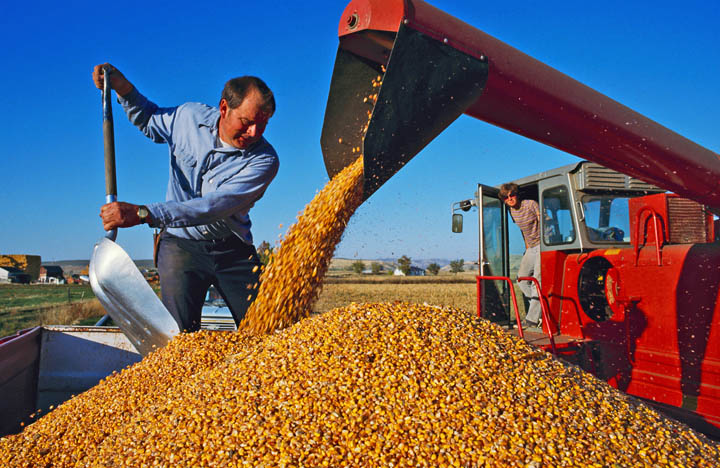
The 2010 U.S. corn crop is still on track to compete with previous years with both yield and production forecast to be the third-highest on record.With a projected surplus of 827 million bushels, this crop demonstrates that U.S. corn farmers will continue to meet all demands for food, feed, fuel and fiber.
November 10, 2010

The 2010 U.S. corn crop is still on track to compete with previous years with both yield and production forecast to be the third-highest on record according to U.S. Department of Agriculture reports released on Nov. 9. With a projected surplus of 827 million bushels, this crop demonstrates that U.S. corn farmers will continue to meet all demands for food, feed, fuel and fiber.
In this report, USDA reduced production and yield estimates slightly to 12.5 billion bushels and 154.3 bushels per acre. These revisions follow previous adjustments made in the report released on October 8 that showed reductions of the estimated 2010 national average corn yield from 162.5 to 155.8 bushels per acre and overall corn production from 13.2 billion to 12.7 billion bushels.
The average farm price increased 20 cents per bushel over the October estimate, to $5.20 per bushel. A USDA announcement released on Sept. 30 reporting the U.S. carried an additional 322 million bushels of corn carried into this year tempers what could have been more severe increases.
"The marketplace generally responds well to these temporary challenges," said National Corn Growers Association Production and Stewardship Action Team Chair Steve Ebke. "With higher grain prices, southern hemisphere corn growers will respond to market signals with the crop they deliver in six months. Likewise, we anticipate U.S. farmers will invest in higher production next year."
While the 2010 harvest projections continue to decline, the crop forecast remains strong and supplies will meet demand without majorly impacting consumer food prices. In late August, the USDA reported that food price increases in 2010 will be minimal. The Consumer Price Index for all food increased 1.8 percent in 2009 and is forecast to increase 0.5 to 1.5 percent in 2010 - the lowest increase since 1992.
Recent reports also indicate that increased ethanol production will not cause food prices to rise substantially. While many anti-ethanol groups continue to blame ethanol production increases for the corn price spike of 2008, respected experts are now reexamining the causes underlying the drastic spike.
In a July 2010 report, the World Bank stated that "the effect of biofuels on food prices has not been as large as originally thought, but that the use of commodities by financial investors may have been partly responsible for the 2007-08 spike."
International studies further supported this claim. The United Kingdom's Department for Environment, Food and Rural Affairs issued a report in March 2010 that discounted biofuels impact, stating "Available evidence suggests that biofuels had a relatively small contribution to the 2008 spike in agricultural commodity prices. Studies which have found a large biofuel impact across agricultural commodities have often considered too few variables, relied on statistical associations or made unrealistic or inconsistent assumptions."
Distillers grains, an ethanol co-product used as a high-protein feed ingredient, continue to offset increased ethanol demand for corn as they supply the livestock market with quality nutrition in an affordable manner. For the first time, distillers grains availability will displace more than 1 billion bushels of corn in domestic livestock rations this marketing year further decreasing demand for the near record supply.
You May Also Like



